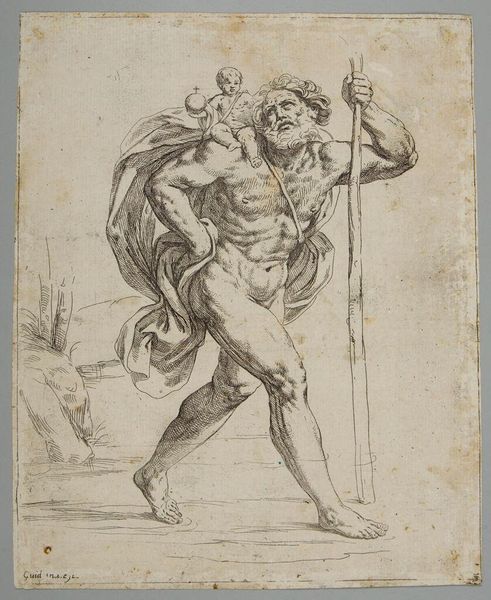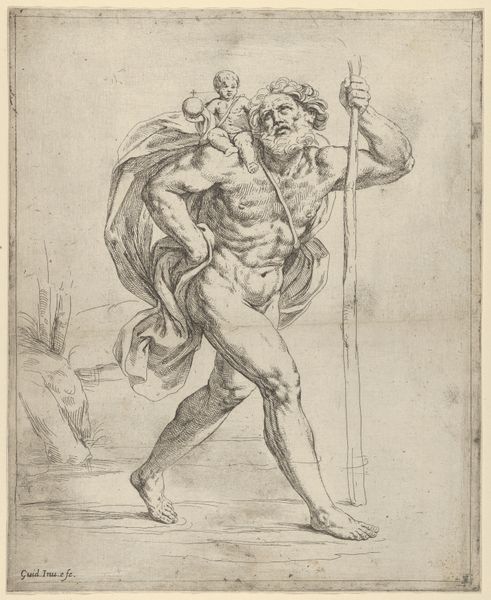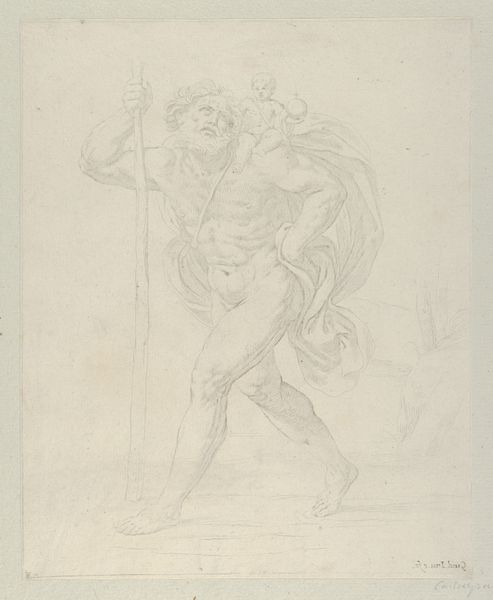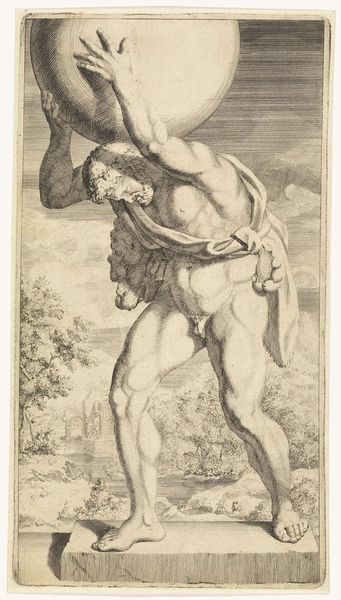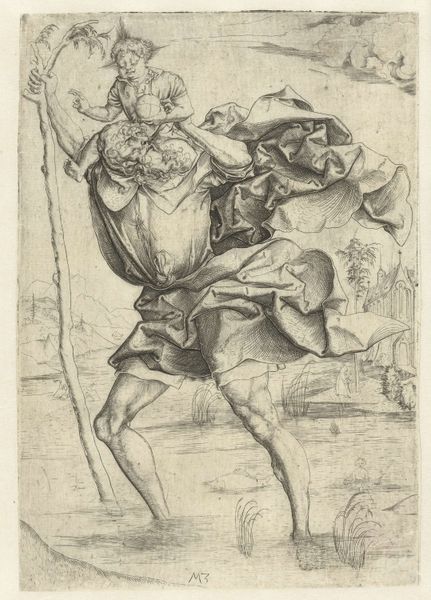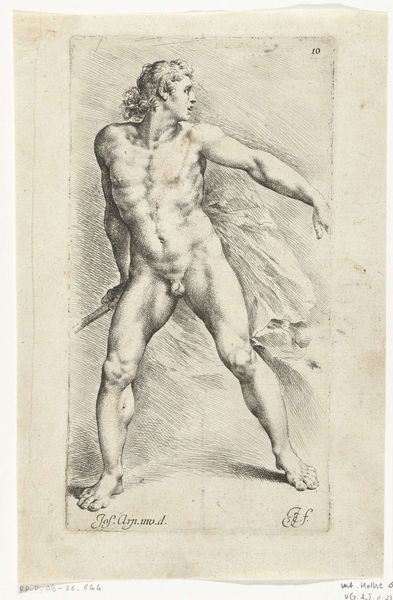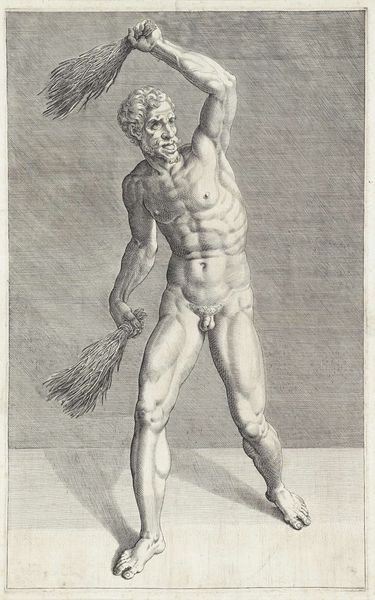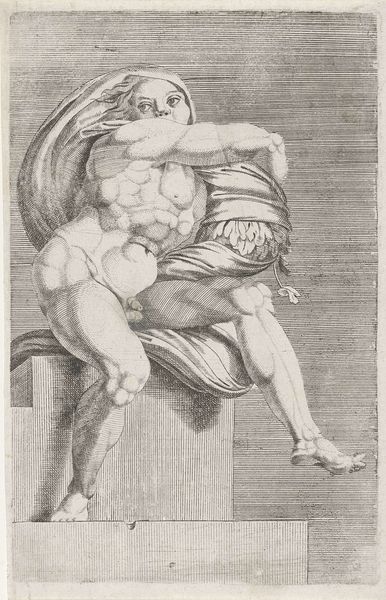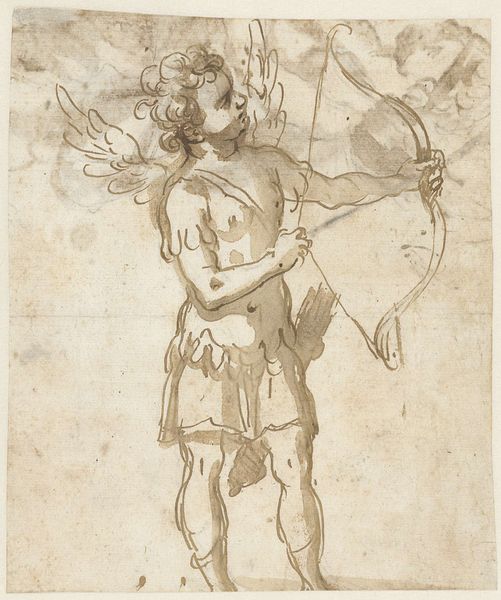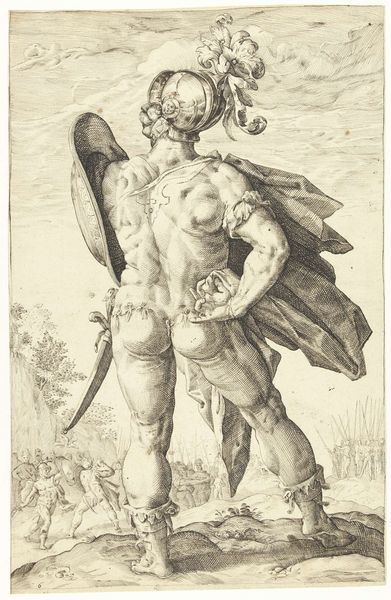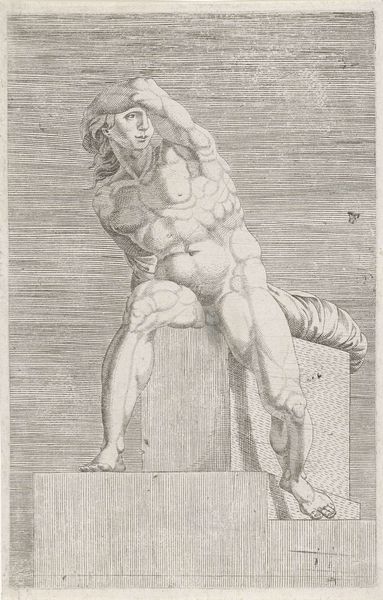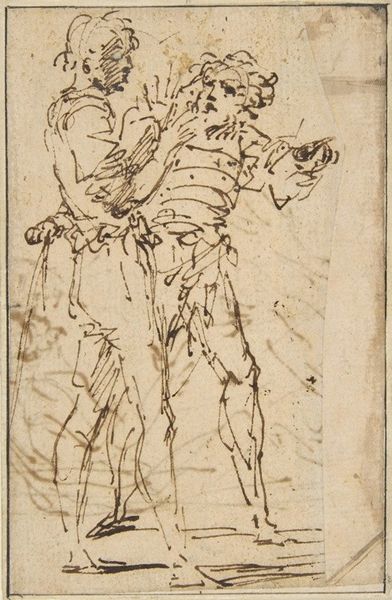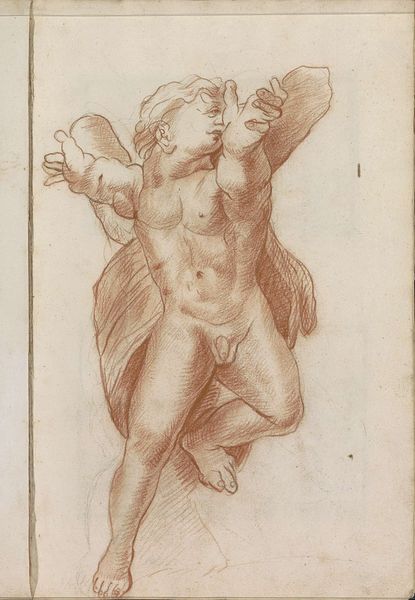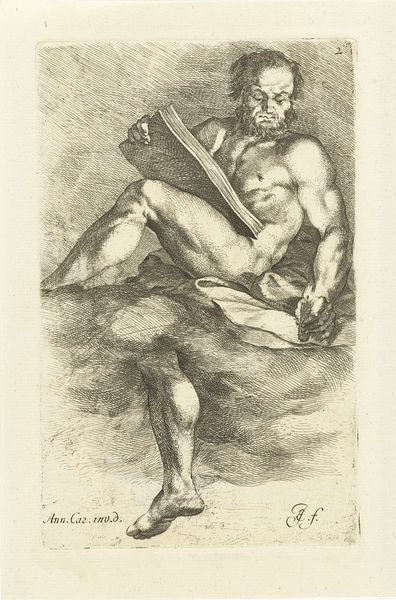
drawing, pen
#
portrait
#
drawing
#
imaginative character sketch
#
light pencil work
#
allegory
#
pencil sketch
#
figuration
#
11_renaissance
#
personal sketchbook
#
idea generation sketch
#
sketchwork
#
character sketch
#
sketchbook drawing
#
pen
#
italian-renaissance
#
sketchbook art
#
fantasy sketch
Copyright: Public Domain: Artvee
Editor: This pen drawing is entitled “Saint Christopher and the Holy Child” and it’s attributed to Guido Reni, placing it sometime between 1600 and 1640. The composition feels so dynamic, with Christopher in mid-stride, staff in hand, a child perched on his shoulder. What historical context shapes your view of this piece? Curator: Well, it's important to remember that religious imagery in the post-Reformation era wasn't just about faith. It was also deeply intertwined with political power and social control. Saint Christopher, typically seen as a protector of travelers, here he seems to carry the weight of the world, quite literally. But think about who was commissioning art like this and what messages they were trying to convey. Editor: So, beyond just the religious aspect, are you saying the Church may be communicating something about itself, or perhaps about the ideal devotee? Curator: Precisely. Consider the emphasis on Christopher's physical strength, his commitment to the Christian faith represented by carrying Christ and the globe. Who benefited from projecting this image of robust faith? What impact does that image of ‘robust faith’ have when society does not appear that way at all? The elite commissioned this type of image so what might be implied when this contrasts with a vastly different social experience for most people? Editor: That is a great question… so it makes the work more of an allegory for power than about religious iconography alone. The dynamic, ‘strong’ composition would visually serve the ideological project by those in control. How fascinating. I now look at Reni’s drawing much more analytically. Curator: Yes! And the sketch itself – was this ever made into a monumental fresco, tapestry, sculpture or other ‘permanent’ piece of propagandistic ‘public’ art? How many copies circulated throughout Europe at the time? This has an affect, and further empowers a powerful elite and social hierarchy that lasts to today. Thanks for walking with me! Editor: I appreciate the walk - fascinating points for future research, indeed. Thanks!
Comments
No comments
Be the first to comment and join the conversation on the ultimate creative platform.
